Abstract
Objective
To analyze and identify the chemical compositions of different organic plants crude extracts of Mentha piperita (M. piperita) grown in Sultanate of Oman by gas chromatography-mass spectrometry (GC-MS).
Methods
The powder sample was extracted with methanol by using Soxhlet extractor. Methanol crude extracts of M. piperita and its derived fractions of hexane, chloroform, ethyl acetate and butanol were prepared.
Results
Qualitative analyses of various organic plant crude extracts of M. piperita by using GC-MS showed that majority of these compounds are bioactive.
Conclusions
According to the results of the present study, the plant crude extracts could be used as medicine for the treatment of different diseases. The analysis and identification of the chemical compounds in the plant crude extracts by using GC-MS was the first time.
Keywords: Mentha piperita, Organic crude extracts, Soxhlet extractor, Gas chromatography-mass spectrometry analyses
1. Introduction
Mentha piperita L (M. piperita) is one of the most important medicinal plants in folk medicine. This plant is a leafy plant belonging to the family of Lamiaceae. Since the ancient times, different parts of this medicinal plant have been used to cure specific ailments. It is indigenous to Europe. Nowadays it is cultivated throughout all regions of the world[1]. Ancient Greek, Romanium and Egyptian cultures used this plant for cooking purpose as well as preparation of medicine[2],[3]. M. piperita is a Latin name comes from the Greek Mintha. Various types of mint species are available worldwide such as applemint, water mint, horsemint, pineapple mint, orange mint, pennyroyal and spearmint. The leaves of this plant contain some important bioactive compounds. The leaves also contain one toxic compound pennyroyal. This toxic compound can damage the liver[4]. But the essential oil of this plant is rubbed onto the skin to repel insects and prevent them from biting[3]. Recently, there is growing interest among the scientists and researchers for the preparation of new drugs derived from the medicinal plants. At the same time their interest is on stems and leaves of this plant to isolate and identify some bioactive compounds which can be used as a medicine for the treatment of diseases. They belief that medicine derived from stems and leaves are safe and dependable. The isolated drugs from this plant can compare with costly synthetic drugs that have adverse effects[2],[3].
The world production of M. piperita oil is about 8 000 tons per year[4] due to its medicinal values. The plant contains high concentration of essential oil around 1.2%-1.5%. The essential oil of this plant contains some active ingredients, such as menthol, menthone, and menthyl acetate[1]–[5]. There are other active ingredients also found in the M. piperita, such as flavonoids, polymerized polyphenols, carotenes, tocopherols, saponin, and choline[1]–[5]. The essential oil is useful for mental fatigue and depression, and also refreshing the spirit, stimulating mental agility and improving concentration. It is widely used in food, cosmetics, medicines[5]–[7], and it is also used for chemopreventive and antimutagenic purpose[8]. It is also used for symptomatic relief of the common cold[6].
In China, the formulation products from M. piperita are used to decrease symptoms of irritable bowel symdrome and decrease digestive symptoms such as dyspepsia and nausea[5]–[7]. Traditionally, it is used as an analgesic and to treat headache[9]. Commercially, it is used for the production of manufactured products, cooking and medicine for its aromaticity[9]. Recently, this plant is used for the preparation of toothpaste, chewing gum, mouthwash, soaps, sweets, balms or creams and cough medicine[2]–[5]. The literature search reveals that still no works has been done on the crude extracts of Omani M. piperita species. Therefore, the aim of the work was to isolate and investigate the chemical constituents in different organic plant crude extracts from the leaves of locally grown medicinal plants M. piperita by using gas chromatography-mass spectrometry (GC-MS).
2. Materials and methods
2.1. Chemicals
All chemicals such as hexane, chloroform, methanol, butanol and ethyl acetate (analytical grade) were purchased from BDH Ltd., UK and the other high performance liquid chromatography grade solvents from Sigma Chemical Co.
2.2. Plant sample
The plant samples of M. piperita were collected from Nizwa, Sultanate of Oman. Initially, it was identified by morphological features and database available in the website. The collected plant samples were transported to the laboratory and kept at room temperature until analysis.
2.3. Sample collection
The whole M. piperita plants were collected from Nizwa, Sultanate of Oman. The plants were harvested in the month of March, 2012 at 5 PM. The collected plant samples were packed in polyethylene bags and stored at 4 °C until further process.
2.4. Preparation of samples
The separated leave samples were washed with tap water to remove the dust and other foreign materials. The washed M. piperita samples were dried under shade for 3 d. Approximately about 100 g of leaves was ground using a grinder for 20 seconds. The air-dried whole leaves were pulverized into powdered form by using heavy duty blander (Jaipan, Super Deluxe, India).
2.5. Preparation of crude extracts
The powder samples (50 g) were extracted with methanol solvent (500 mL) by using Soxhlet extractor for 72 h. After complete extraction, the methanol solvent was evaporated by using rotary evaporator (Yamato, Rotary Evaporator, model-RE 801) under reduced pressure to obtain methanol crude extract (3.59 g). The methanol crude extract from M. piperita (3.0 g) was suspended in water (60 mL). Then it was extracted successively with different organic solvents such as hexane, chloroform, ethyl acetate and butanol to obtain hexane (1.09 g), ethyl acetate (0.45 g), chloroform (0.16 g) and butanol (0.38 g) and residual methanol fractions (1.78 g), respectively. All crude extracts were filtered separately through Whatman No. 41 filter paper to remove particles. The particle free crude extract was evaporated completely by using rotary evaporator (Yamato, Rotary Evaporator, model-RE 801) under reduced pressure to obtain dry crude extracts. The residue left in the separatory funnel was re-extracted twice follow the same procedure and filtered. The combined extracts were concentrated and dried by using rotary evaporator under reduced pressure.
2.6. GC-MS analysis
The GC-MS analysis of different organic plant crude extracts from the leaves of M. piperita grown in Sultanate of Oman was performed using GC-MS. The analysis done by using a PerkinElmer Clarus 600 GC system was equipped with a fused silica gel column (30 m×0.25mm ID, film thickness 0.25 µm) coupled with a PerkinElmer Clarus 600C MS. The detection of data or spectra was done using an electron ionization system with ionization energy of 70 eV. Inert helium gas (99.999%) was used as a carrier gas at a constant flow rate of ±1 mL/min. Mass transfer line and injector temperatures were at 220 and 290 °C, respectively. The temperature programmed for oven was from 60 °C (hold 2 min) to 270 °C at 4 °C/min, then held isothermal for 20 min and finally raised to 300 °C at 10 °C/min. The crude tested samples were diluted with methanol (1/100, v/v, in methanol). The tested samples were filtered with 0.45 µm Millex membrane filter paper (Millipore, France) to remove any dust particles. One microliter filtered test sample was injected in the split mode. The split ratio was 120:1. The percentage (%) of the crude extracts constituents from the M. piperita was expressed as percentage by peak area. The whole process was carried out carefully from the light and heat.
2.7. Identification of chemical constituents
The bioactive compounds were analyzed and identified in different plant crude extracts from the Omani M. piperita based on GC retention time on Rtx®-5MS fused silica capillary column. The mass spectra were matched with computer matching with those of standards (NIST 2005 v.2.0 and Wiley Access Pak v.7, 2003 of GC-MS systems). If it is possible by co-injection was matched with authentic compounds[10].
3. Results
The powdered leave samples were extracted with methanol by usual procedure. The methanol was evaporated from the extract using rotary evaporator to obtain semi solid masses. The methanol crude extract was defatted with water and extracted with different solvent with increasing of polarities to obtain hexane, ethyl acetate, chloroform, butanol and residual methanol fractions, respectively.
3.1. Physical properties
The different crude extracts from M. piperita leaves was different in colours. The hexane extract was deep brown in colour, ethyl acetate was pale yellow, chloroform extract was deep orange and the butanol extract was deep blackish.
3.2. Chemical composition of different crude extracts
The hexane crude extract from M. piperita was analyzed by using GC-MS system with fused silica gel column (Rtx®-5MS) and 18 different organic compounds were found, representing 1.09% of the total extract. The separated identified chemical compounds in hexane crude extract are listed in Table 1 according to their retention time on Rtx®-5MS capillary column. The major chemical compounds identified in the hexane extract from Omani M. piperita (shown in Figure 1 and Table 1) included eucalyptol (1.697%), 3-octanol (0.592%), borneol (0.894%), dihydrocarveol (3.512%), pulegone (3.562%), carvone (8.498%), caryophyllene (5.002%), β-cuvebene (4.658%), hexadecylene oxide (3.102%), N-hexadecylene oxide (7.709%), phytol (1.06%), α-linolenic acid (26.785%), 2-monopalmitin (2.175%), α-amyrin (4.801%), squalene (0.986%) and vitamin E (5.577%).
Table 1. Chemical composition of hexane crude extract of M. piperita.
| Name of compounds | Retention time (min) | Leave (%) |
| 3-Octanol | 7.246 | 0.592 |
| Eucalyptol | 8.471 | 1.697 |
| 3-Octanol acetate | 11.823 | 0.333 |
| Borneol | 13.538 | 0.894 |
| Dihydrocarveol | 14.684 | 3.512 |
| Pulegone | 16.520 | 3.562 |
| Carvone | 16.705 | 8.498 |
| Caryophyllene | 23.903 | 5.002 |
| β-Cuvebene | 26.359 | 16.878 |
| Hexadecylene oxide | 39.189 | 3.102 |
| N-Hexadecylene oxide | 43.156 | 7.709 |
| Phytol | 47.738 | 4.658 |
| α-Linolenic acid | 48.523 | 26.785 |
| 2-Monopalmitin | 58.387 | 2.175 |
| α-Amyrin | 62.914 | 4.801 |
| Squalene | 65.956 | 0.986 |
| Vitamin E | 72.483 | 5.577 |
Figure 1. A typical gas chromatogram of the chemical constituents of hexane extract.
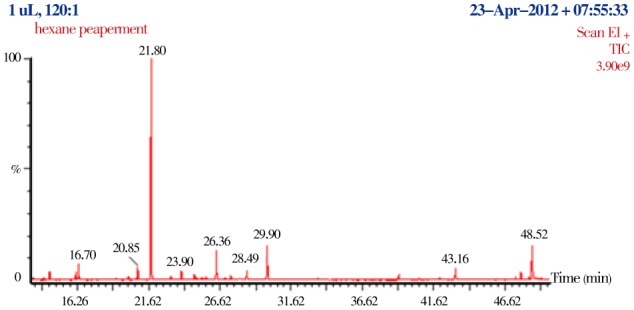
The ethyl acetate crude extract was analyzed by using GC-MS, and it was found to contain a total of 7 different organic bioactive compounds using the same capillary column and conditions, representing 0.45% of the total extract. The major chemical constituents were found in the ethyl acetate extract (Figure 2 and Table 2), including benzoic acid (1.896%), hydrochlorobutanolic acid (2.964%), caffeic acid (31.963%), benzamide acetate (9.073%), 3,7,11,15-tetramethyl-2-hexadecen-1-ol (8.965%), phytol (4.037%) and 9,12,15-octadecatrienal (9.077%).
Figure 2. A typical gas chromatogram of the chemical constituents of ethyl acetate extract.
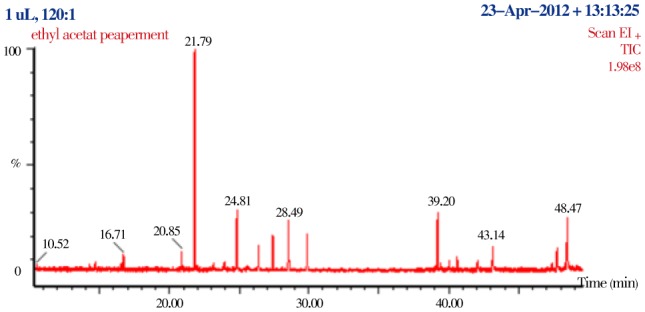
Table 2. Chemical composition of ethyl acetate crude extract of M. piperita.
| Name of compounds | Retention time (min) | Leave (%) |
| Benzoic acid | 16.71 | 1.896 |
| Hydrochlorbetanolic acid | 20.51 | 2.964 |
| Caffeic acid | 21.78 | 31.963 |
| Benzamide acetate | 24.81 | 9.073 |
| 3,7,11,15-Tetramethyl-2-hexadecen-1-ol | 39.20 | 8.965 |
| Phytol | 47.73 | 4.037 |
| 9,12,15-Octadecatrienal | 48.47 | 9.077 |
The chloroform extract from the plant of M. piperita was analyzed by using GC-MS, and it was detected to contain 6 different organic compounds using the same capillary column and conditions, representing 0.16% of the total extract. The major chemical constituents that were found in the chloroform extract (Figure 3 and Table 3) include gluconic acid (9.527%), 2-p-tolylpropene (3.783%), cis-verbenone (3.786%), L-perillaldehyde (59.266%), phytol (13.412%) and α-linolenic acid (10.223%).
Figure 3. A typical gas chromatogram of the chemical constituents of chloroform extract.
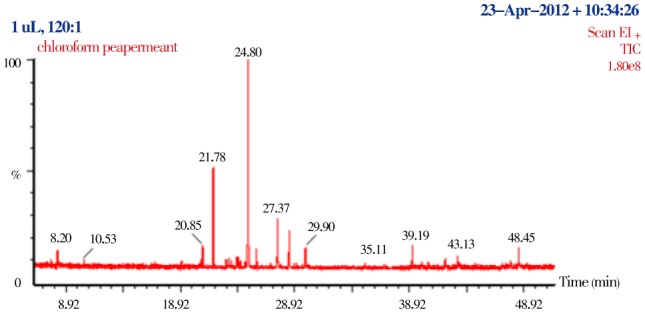
Table 3. Chemical composition of chloroform crude extract of M. piperita.
| Name of compounds | Retention time (min) | Leave (%) |
| Gluconic acid | 8.201 | 9.527 |
| 2-p-Tolylpropene | 10.527 | 3.783 |
| Cis-Verbenone | 20.727 | 3.786 |
| L-perillaldehyde | 21.782 | 59.266 |
| Phytol | 39.190 | 13.412 |
| α-Linolenic acid | 48.454 | 10.223 |
The butanol extract from the plant of M. piperita was analyzed by using GC-MS with the same condition as above, and the analyis led to the identification of 7 different organic compounds, representing 0.38% of the total extract from samples. The major chemical constituents in the butanol crude extract (Figure 4 and Table 4) were 2-p-tolylpropene (19.282%), cis-verbenone (17.966%), 2,6-cresotaldehyde (24.690%), 3,7,11,15-tetramethyl-2-hexadecen-1-ol (14.060%), n-hexadecoic acid (5.098%) and phytol (2.405%).
Figure 4. A typical gas chromatogram of the chemical constituents of butanol extract.
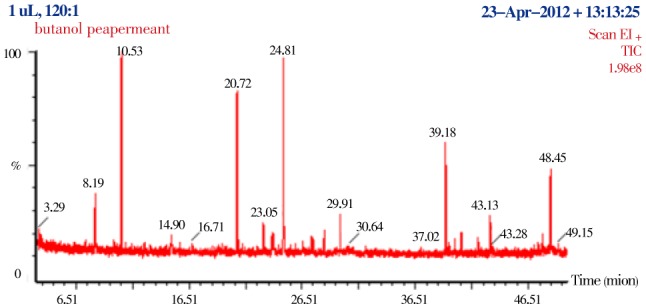
Table 4. Chemical composition of butanol crude extract of M. piperita.
| Name of compounds | Retention time (min) | Leave (%) |
| 2-p-Tolylpropene | 10.53 | 19.282 |
| cis-Verbenone | 20.72 | 17.966 |
| 2,6-Cresotaldehyde | 24.81 | 24.690 |
| 3,7,11,15-Tetramethyl-2-hexadecen-1-ol | 39.18 | 14.060 |
| n-Hexadecoic acid | 43.13 | 5.2976 |
| Phytol | 47.74 | 2.4054 |
Finally the residual methanol crude extract was analyzed by using GC-MS, and led to the identification of 8 different organic compounds, representing 1.78% of the total extract from plant samples. The major chemical constituents in the methanol crude extract (Figure 5 and Table 5) were p-isopropenyl toluene (16.153%), 4H-pyran-4-one, 2,3-dihydro-3,5-dihydrox (3.026%), (+)-carvone (4.655%), germacrene D (5.801%), 3,7,11,15-tetramethyl-2-hexadecen-1-ol (7.047%), palmitic acid (5.328%), 9,12,15-octadecatrien-1-ol (12.099%) and β-sitosterol (45.886%).
Figure 5. A typical gas chromatogram of the chemical constituents of methanol crude extract.
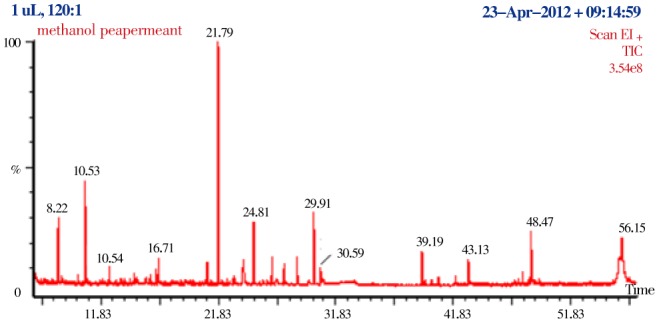
Table 5. Chemical composition of methanol crude extract of M. piperita.
| Name of compounds | Retention time (min) | Leave (%) |
| P-isopropenyl toluene | 10.527 | 16.153 |
| 4H-pyran-4-one, 2,3-dihydro-3,5-dihydrox | 12.538 | 3.026 |
| (+)-Carvone | 16.715 | 4.655 |
| Germacrene D | 26.359 | 5.801 |
| 3,7,11,15-tetramethyl-2-hexadecen-1-ol | 39.195 | 7.047 |
| Palmitic acid | 43.131 | 5.328 |
| 9,12,15-octadecatrien-1-ol | 48.474 | 12.099 |
| β-sitosterol | 56.147 | 45.886 |
4. Discussion
All the plant crude extracts were found to obtain some biologically active compounds at very high concentration. The high concentration of major compounds may be considered to be a part of plants defense systems.
The prepared suitable crude extracts was obtained from the leaves of M. piperita for bioactive chemical compounds, which can be chosen on the basis of above mentioned GC-MS analysis. All plant crude extracts contained some biologically active compounds at very high concentration. The high concentration of major compounds may be considered to be a part of plants defense systems. They have been included in a large group of protective molecules found in this plant named ‘phytoanticipins’ or ‘phytoprotectants’[11],[12]. Therefore, the separation and identification of various crude extracts from the leaves of M. piperita by GC-MS were needed. The identified chemical compounds might have some important ecological significance. The majority of chemical constituents present in the crude extracts of Omani M. piperita have not been previously reported.
Acknowledgments
The authors are grateful to Prof. Dr. Nafsiah Binti Shamsuddin, Dean, College of Pharmacy and Nursing, University of Nizwa, Sultanate of Oman for her continuous encouragement during the work and the support with all laboratory facilities. The authors are also grateful to University of Nizwa, Nizwa, Sultanate of Oman for providing all chemicals and other expenses from their internal fund to carry out this project. Thanks to Khaloud Ali Said Al-Alawi and AhlamRashed Alabri, Lab Technicians, Natural Product Lab, University of Nizwa for their continuous help during the experiment. Thanks also to Mr. Tomas Hughes, Writing Center, University of Nizwa for his help to correct the manuscript. The authors wish to express sincere gratitude to the Central Instrument Laboratory, College of Agriculture and Marine Sciences, Sultan Qaboos University, Sultanate of Oman where the test were confirmed (Grant No. 507/SOP/OB/1/2013)
Comments
Background
M. piperita is one of the most important medicinal plants in folk medicine. This plant is a leafy plant belonging to the family of Lamiaceae. Locally it is known as “pippermint” and their dried whole parts are used in folk medicine. According to the literature search, there is no work has been done on Omani M. piperita L by the researcher.
Research frontiers
The aim of this study is to prepare various crude extracts using different polarities of solvent and to qualitatively evaluate their chemical constituents by GC-MS.
Related reports
The literature search reveals that there is no work has been done on Omani M. piperita species by the researcher. Nevertheless, the other parameters of this plant has been investigated by other researchers.
Innovations and breakthroughs
Although the experimental work done by the author is routine work, it gives the new information and data to the scientific community.
Applications
This plant is used worldwide as a medicine. According to the paper, there are so many bioactive compounds that can be used to prepare medicine.
Peer review
The present study on biochemical screening of various leaves crude extracts of M. piperita provides the valuable brief and scientific information about this plant.
Footnotes
Foudation Project: Supported by Central Instrument Laboratory, College of Agriculture and Marine Sciences, Sultan Qaboos University, Sultanate of Oman (Grant No. 507/SOP/OB/1/2013).
Conflict of interest statement: We declare that we have no conflict of interest.
References
- 1.Saharkhiz MJ, Motamedi M, Zomorodian K, Pakshir K, Miri R, Hemyari K. Chemical composition, antifungal and antibiofilm activities of the essential oil of Menthe piperita L. ISRN Pharm. 2012 doi: 10.5402/2012/718645. [DOI] [PMC free article] [PubMed] [Google Scholar]
- 2.Iwu MW, Duncan AR, Okunji CO. New antimicrobials of plant origin. In: Janick J, editor. Perspectives on new crops and new uses. Alexandria, VA: ASHS Press; 2009. pp. 457–465. [Google Scholar]
- 3.Georgiev E, Stoyanova A. Mentha piperita oil. In: Dimitrov D, editor. A guide for the specialist in aromatic industry. Plovdiv, Bulgaria: UFT Academic Publishing House; 2006. pp. 219–230. [Google Scholar]
- 4.Cragg GM, Newman DJ. Natural product drug discovery in the next millennium. Pharm Biol. 2001;139:8–17. doi: 10.1076/phbi.39.s1.8.0009. [DOI] [PubMed] [Google Scholar]
- 5.Sharafi SM, Rasooli I, Owlia P, Taghizadeh M, Astaneh SD. Protective effects of bioactive phytochemicals from Mentha piperita with multiple health potentials. Pharmacogn Mag. 2010;6(23):147–153. doi: 10.4103/0973-1296.66926. [DOI] [PMC free article] [PubMed] [Google Scholar]
- 6.Stoyanova A, Paraskevova P, Anastassov C. A comparative investigation on the essential oil composition of two Bulgarian cultivars of Mentha piperita L. J Essen Oil Res. 2000;12:438–440. [Google Scholar]
- 7.Hossain MA, Ferdous T, Salehuddin SM, Das AK. In-vitro cytotoxicity (LC50) of extracts obtained from the seeds of Zea mays. Asian J Food Agro Ind. 2009;2(3):336–341. [Google Scholar]
- 8.Hossain MA, Shah MD, Sang SV, Sakari M. Chemical composition and antibacterial properties of the essential oils and crude extracts of Merremia borneensis. J King Saud Univ Sci. 2012;24:243–249. [Google Scholar]
- 9.Samarth RM, Panwar M, Kumar M, Kumar A. Protective effects of Mentha piperita Linn on benzo[a]pyrene-induced lung carcinogenicity and mutagenicity in Swiss albino mice. Mutagenesis. 2006;21(1):61–66. doi: 10.1093/mutage/gei075. [DOI] [PubMed] [Google Scholar]
- 10.Adam PR. Identification of essential oil components by gas chromatography/quadrupole mass spectroscopy. USA: Allured Publishing Corporation; 2001. pp. 197–244. [Google Scholar]
- 11.Hossain MA, Nagooru MR. Biochemical profiling and total flavonoids contents of leaves crude extract of endemic medicinal plant Corydyline terminalis L. Kunth. Pharmacogn J. 2011;3(24):25–30. [Google Scholar]
- 12.Hashmi LS, Hossain MA, Weli AM, Al-Riyami Q, Al-Sabahi JN. Gas chromatography-mass spectrometry analysis of different organic crude extracts from the local medicinal plant of Thymus vulgaris L. Asian Pac J Trop Biomed. 2013;3(1):69–73. doi: 10.1016/S2221-1691(13)60026-X. [DOI] [PMC free article] [PubMed] [Google Scholar]


